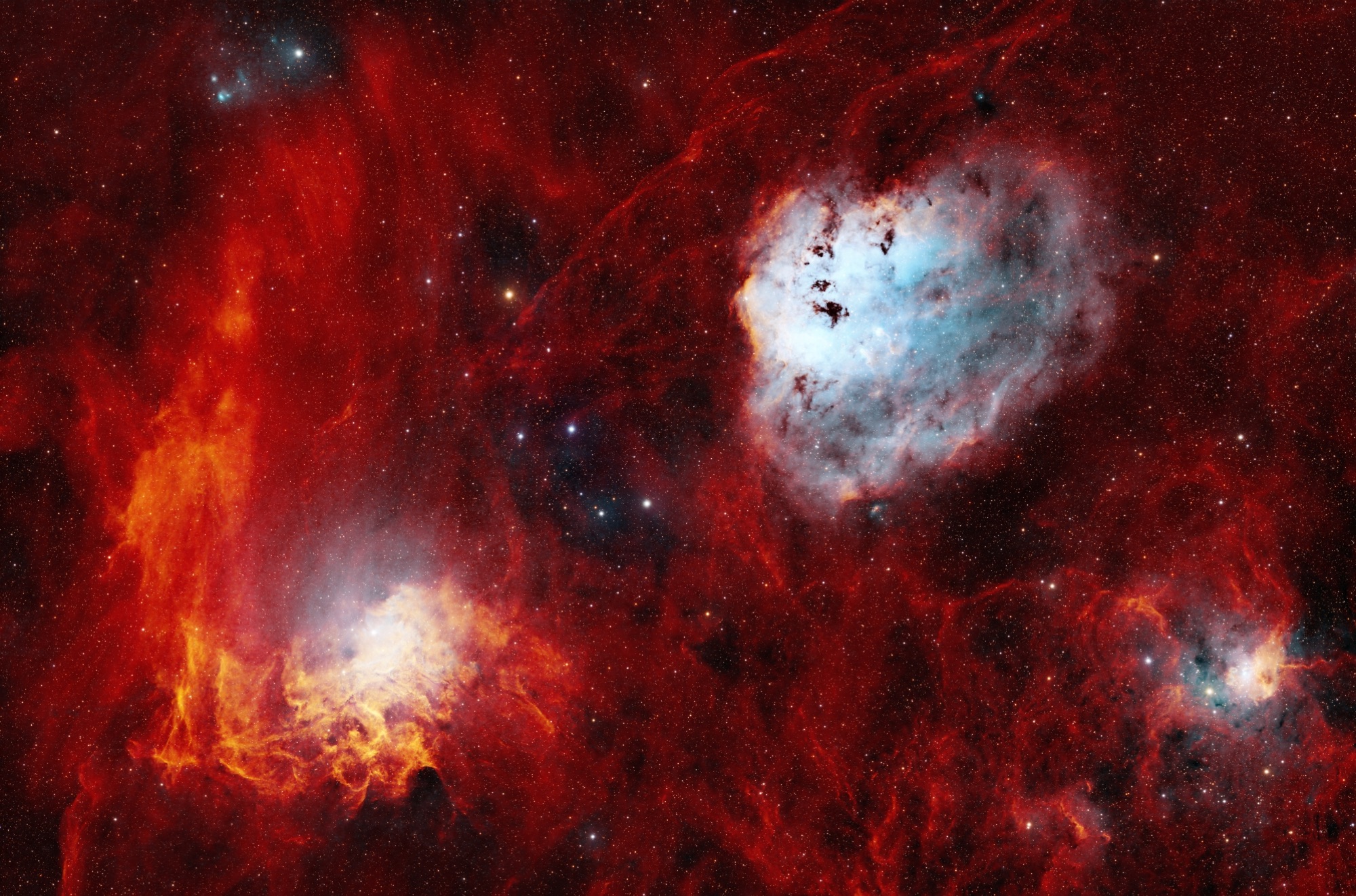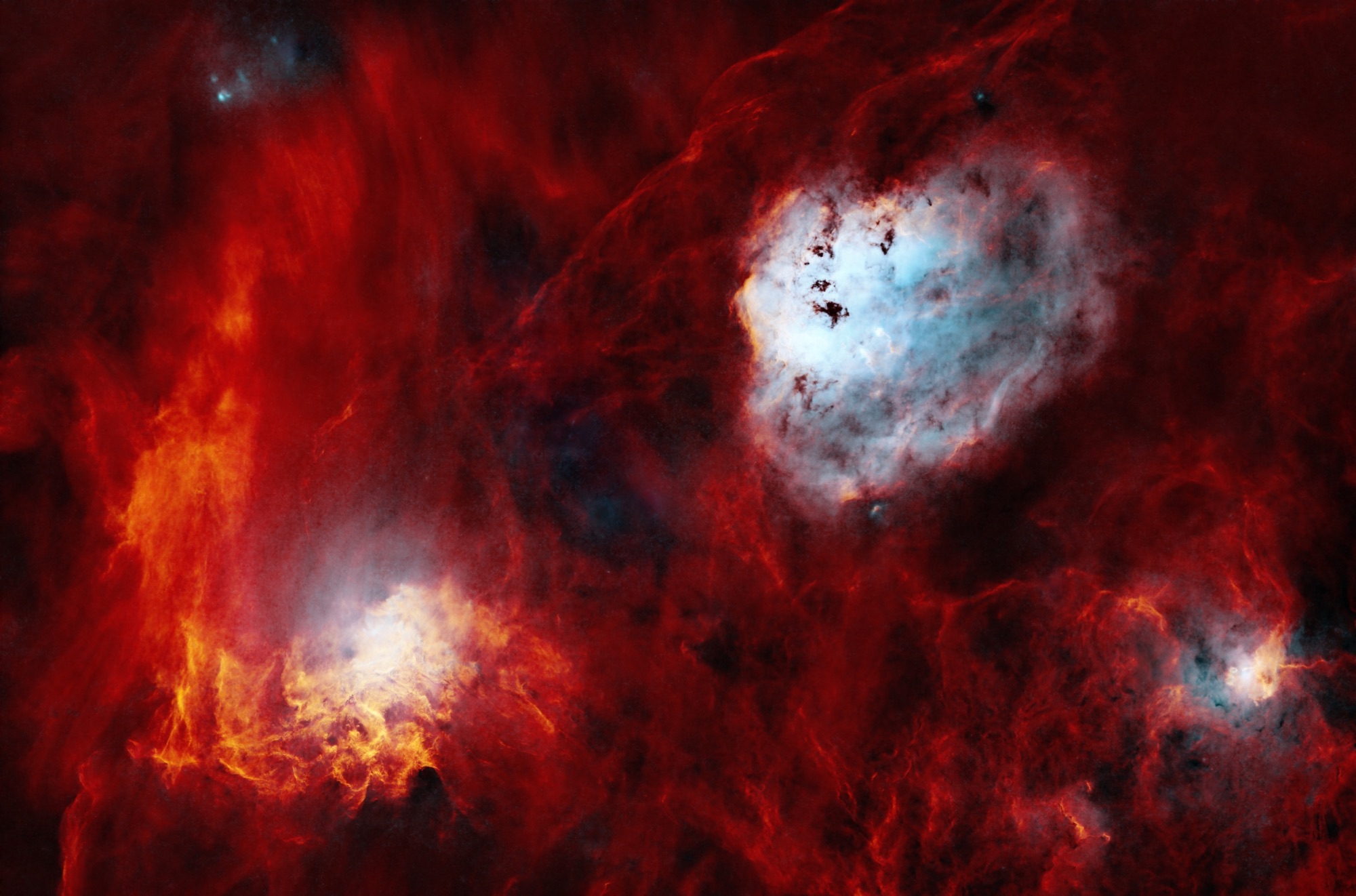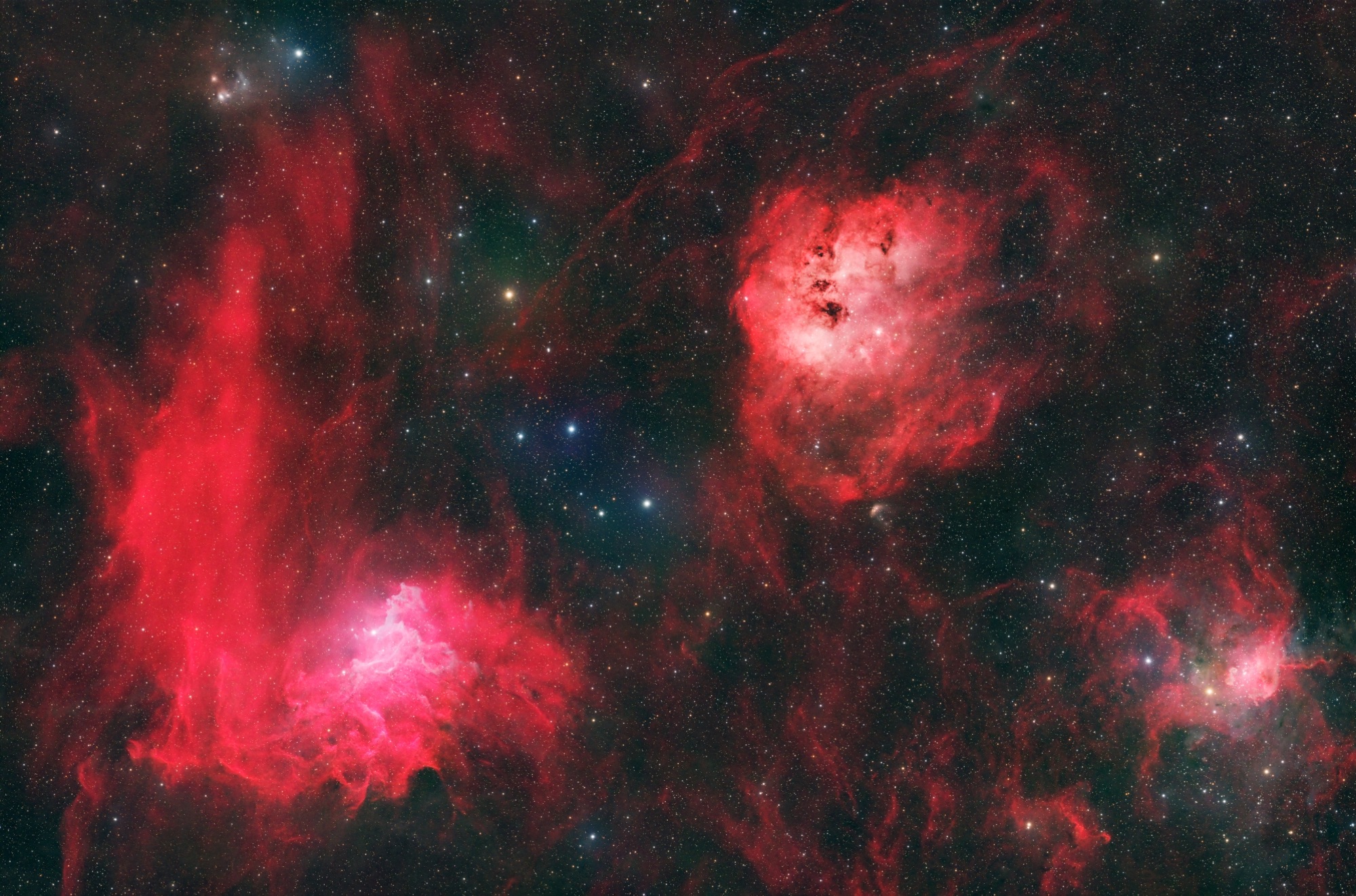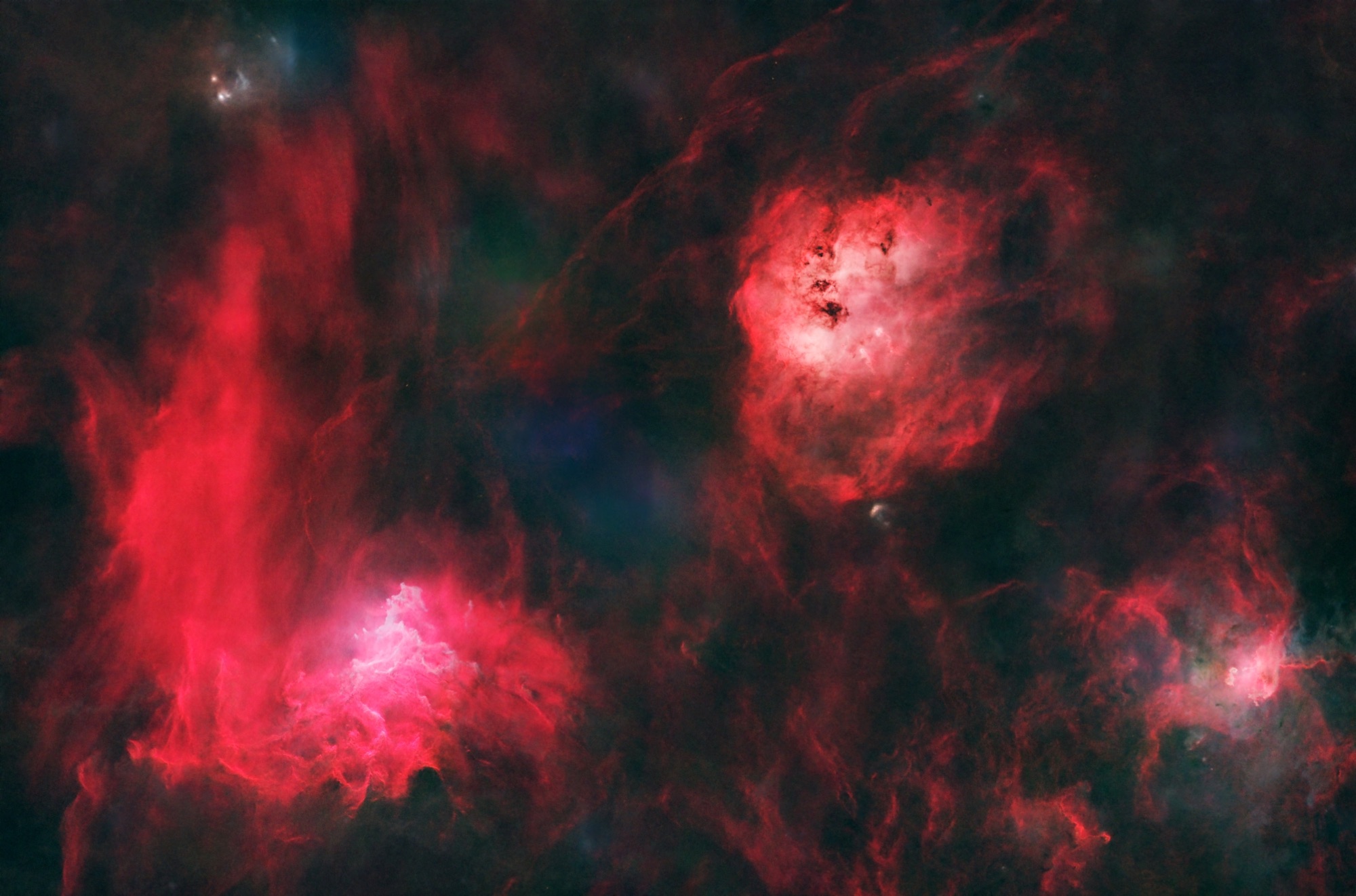The Flaming Star, Tadpoles, and Spider Nebulae
I gathered about 40 hours of narrowband and broadband data for this rendition of the Flaming Star, Tadpoles, and Spider Nebulae over a ten-day session in late 2024/early 2025.
Move the Blue Slider to see a Comparison

|
Region overview
(region overview is AI Generated, prompt and details at the end)
IC 405, IC 410, and IC 417 are three emission nebulae located in the constellation Auriga. While they share some similarities, each nebula has its unique characteristics.
IC 405, the Flaming Star Nebula is a small, irregular nebula with wispy tendrils of gas and dust stretching about 1 degree across. Located approximately 6,800 light-years away from Earth, it is thought to be the remnant of a supernova explosion that occurred around 2,000 years ago. The vibrant colors of IC 405 are due to the presence of ionized hydrogen and helium, reflecting the intense radiation from nearby stars.
IC 410 (AKA the Tadpoles Nebula), on the other hand, is a large molecular cloud with bright blue-green hues and dark lanes of interstellar gas and dust stretching about 30 arcminutes across. At approximately 20,000 light-years away, IC 410 harbors numerous young stars and protostars, making it an ideal target for studying star formation.
The Spider Nebula, IC 417 is also an emission nebula, located around 20,000 light-years from Earth. It appears as a small cloud with bright pinkish-red hues and dark lanes of gas and dust stretching about 2 degrees across. The nebula’s striking appearance is due to its high concentration of ionized gas and intense radiation from nearby hot stars.
All three nebulae are popular targets for amateur astronomers and astrophotographers, offering a glimpse into the dynamic process of star formation and the explosive power of supernovae.
Acquisition Details
- Mount: Astro-Physics Mach2GTO
- Telescope: Takahashi FSQ-106EDXv4
- Camera: ZWO ASI6200MM
The data for this was captured over several nights (December 30 & 31, 2024, and January 1, 4, 7, and 8, 2025), gathering 290 unguided subs for a total of 39.67 hours.
It’s a single framing (not mosaic), based on what could nicely fit on the sensor.
Per-filter totals:
- Red: 2.67 hours (32 subs)
- Green: 2.83 hours (34 subs)
- Blue: 3.17 hours (38 subs)
- Sii: 11.83 hours (71 subs)
- Ha: 11.00 hours (66 subs)
- Oiii: 8.17 hours (49 subs)
- total: 39.67 hours (290 subs)
Processing details
All processing was done in PixInsight, using several plugins and scripts.
RGB filters
The processing included (see the updated processing icons here):
- For each of the RGB channels:
- Dynamic Crop
- GradientCorrecton
- BlurXTerminator (correct only)
- RGB combination via PixelMath
- Auto Linear Fit
- ImageSolver
- SpectrophotometricColorCalibration (PhotonFlux)
- BlurXTerminator (full)
- NoiseXTerminator
- StarXTerminator
- Stretched the stars via SetiAstro’s “Star Stretch”
- GHS and a bit of curves to stretch the starless
- several iterations with masks to get rid of some leftover star halos
Narrowband Filters
- For each of the individual Ha, Oiii, and Sii master images:
- BlurXTerminator (full)
- GradientCorrection
- NoiseXTerminator
- StarXTerminator (I didn’t use the stars from these)
- Preliminary stretch with SetiAstro’s StatisticalStretch
- GHS and a bit of curves to stretch each starless image and set the black point
Combination
At this point I had 5 stretched (AKA “non-linear”) images to combine:
- RGB Starless
- RGB Stars
- Sii Starless
- Ha Starless
- Oiii Starless
Time to start combining!
- Combined HOO with PixelMath
- NarrowbandNormalization for HOO with blend set to zero
- Used the NBColourMapper to convert the Sii image to a color image, hue==45
I then screened the colorized Sii image on to the bi-color HOO image using the ImageBlend script. I spent a lot of time with iterating between curves and GHS to get the image where I liked it, trying very hard to not lose the Tadpoles in the process. I also used a mask to reduce some extra halos left between the Flaming Star and Tadpoles
Finally, I used a PixelMath script to sprinkle the RGB stars back in. For fun (and comparison) I also made an RGB-only version
If you click on one of the gallery images you can use the arrow keys to flip between them to see the differences between the narrowband, RGB, and starless narrowband version




Image details on Astrobin

overview written by AI, using the llama3.2:latest model, with this prompt:
write a 250 word description of IC405, IC410, and IC417, including
apparent size, distance from earth, and interesting details.
Don't plagiarize
